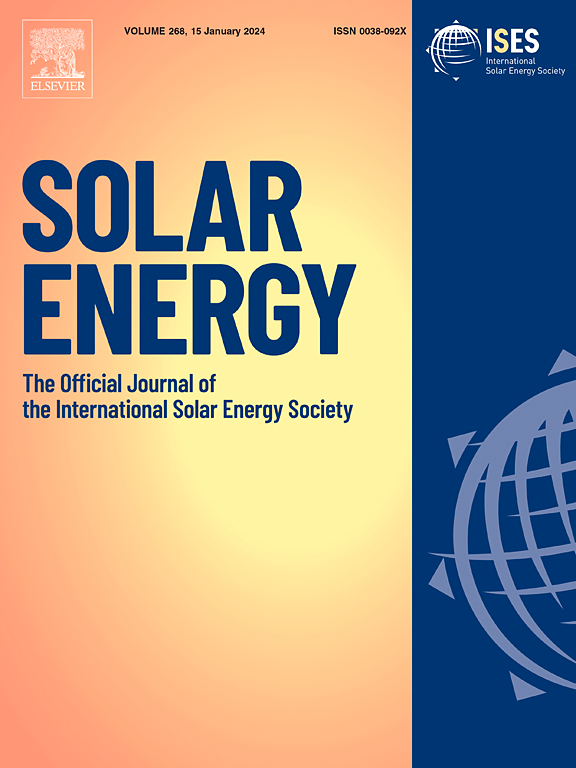Design and analysis of inorganic tandem architecture with synergistically optimized BaSnS3 top and AgTaS3 bottom perovskite Sub-Cells
IF 6
2区 工程技术
Q2 ENERGY & FUELS
引用次数: 0
Abstract
Perovskite materials are revolutionizing the solar cell (SC) industry, continually enhancing their properties and establishing a prominent photovoltaic technology. Among these, BaSnS3 (BTS) and AgTaS3 (ATS) stand out for their strong potential as absorber layers. These inorganic chalcogenide perovskites address the drawbacks of their organic counterparts, being both lead-free and non-toxic, thereby making them highly suitable for photovoltaic (PV) applications. The exploration of BTS and ATS as absorber layers in a tandem solar cell’s top and bottom cells has yielded remarkable outcomes. The innovative tandem solar cell design features a top cell structured as n-WS2/p-BaSnS3/p+-MoS2 and a bottom cell configured as n-WS2/p-AgTaS3/p+-GeS. This theoretical study using SCAPS-1D demonstrates a high efficiency of 42.57 % with a VOC of 2.03 V, a JSC of 23.29 mA/cm2, and an FF of 89.85 %. These impressive results are achieved with adjusted layer thickness, carrier doping and defect levels, highlighting the strong potential of BaSnS3 and AgTaS3 photoactive materials. The findings reveal the viability of innovative, all-inorganic perovskite-based tandem solar cells, offering a promising avenue for future sustainable and high-efficiency photovoltaic device technologies.
设计和分析具有协同优化的顶部 BaSnS3 和底部 AgTaS3 包晶子电池的无机串联结构
过氧化物材料正在彻底改变太阳能电池(SC)行业,不断提高其性能,并成为一种重要的光伏技术。其中,BaSnS3 (BTS) 和 AgTaS3 (ATS) 因其作为吸收层的强大潜力而脱颖而出。这些无机瑀质包晶解决了有机包晶的缺点,既无铅又无毒,因此非常适合光伏(PV)应用。将 BTS 和 ATS 作为串联太阳能电池顶部和底部电池的吸收层的探索取得了显著成果。创新的串联太阳能电池设计采用了 n-WS2/p-BaSnS3/p+-MoS2 结构的顶部电池和 n-WS2/p-AgTaS3/p+-GeS 结构的底部电池。这项使用 SCAPS-1D 进行的理论研究表明,在 2.03 V 的 VOC、23.29 mA/cm2 的 JSC 和 89.85 % 的 FF 下,效率高达 42.57 %。通过调整层厚、载流子掺杂和缺陷水平,这些令人印象深刻的结果得以实现,凸显了 BaSnS3 和 AgTaS3 光活性材料的强大潜力。这些研究结果揭示了创新的、基于全无机包晶的串联太阳能电池的可行性,为未来的可持续高效光伏器件技术提供了一条前景广阔的途径。
本文章由计算机程序翻译,如有差异,请以英文原文为准。
求助全文
约1分钟内获得全文
求助全文
来源期刊

Solar Energy
工程技术-能源与燃料
CiteScore
13.90
自引率
9.00%
发文量
0
审稿时长
47 days
期刊介绍:
Solar Energy welcomes manuscripts presenting information not previously published in journals on any aspect of solar energy research, development, application, measurement or policy. The term "solar energy" in this context includes the indirect uses such as wind energy and biomass
 求助内容:
求助内容: 应助结果提醒方式:
应助结果提醒方式:


